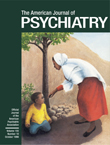By Force of Fantasy: How We Make Our Lives
This elegantly crafted and scholarly survey will remind readers of experiences that are familiar but rarely examined or studied systematically. Although fantasy is nearly universal as a mode of human thinking, the significance of the daydreams, scenarios, and mental scripts that populate our private reveries is obscure. Ethel Person, a training and supervising analyst at the Columbia University Center for Psychoanalytic Training and Research and professor of clinical psychiatry at the Columbia University College of Physicians and Surgeons, draws on clinical psychoanalytic experience, history, literature, and biography to explore the meaning of fantasy for the individual, those closest to him or her, and the culture at large. Her rich and evocative account succeeds at deepening our understanding of a relatively neglected aspect of mental life.
Fantasy is described as a self-generated fiction that can range from flash images to fully scripted scenarios. It may arise spontaneously or be willfully evoked for purposes as diverse as sexual arousal, mastering trauma, or the restoration of self-esteem. Fleeting fantasy is transient and arises in response to a particular stress, problem, or situation. In contrast, repeating fantasy is durable and, like a cherished and familiar friend, may be evoked repeatedly from adolescence throughout adult life. These erotic or self-soothing fantasies (highly individual but finite in thematic range) can be described as organizing in the sense of representing the fantasizer’s basic conflicts and paradigms for relating to others. A third group of more realistic fantasies are described as generative; these are future oriented and may range from wish-fulfilling substitutes to rehearsals for future intentionality. In contrast to classical traditions, which focus on the pathological aspects of fantasy, Person’s major emphasis is on the many adaptive purposes they may serve. Foremost among these is the creation of an ambience of hope for the future.
Shared fantasies may be congruent, as when two or more people share the same aim (comrades in arms, suicide pact), or complementary, as when individuals adopt or enact reciprocal roles (student and mentor, rescuer and rescued). Seen in childhood as play, shared fantasies such as these are described as present in all our important relationships and as a force in constructing our interpersonal worlds.
Although grounded in differences in bodily experience, the major determinant of sex-related fantasy is culture. Girls have traditionally scripted dreams about romantic love, and boys have fantasies about quests and conquests. At the same time, cultural changes, particularly those related to the women’s movement, are described as facilitating a shift in women’s fantasies to include more seducing than being seduced and more forcing than being forced. On the other hand, a constricted cultural view of masculinity, along with a diminution in men’s influence, may nourish the apparent proliferation of male vigilante and paramilitary fantasies.
Individuals often select and modify fantasies from the bank of available cultural icons, scripts, and myths. The exceptional artist, poet, or leader, however, may catalyze a shift in the “collective imagining” of a culture or people: shifts brought forward by the artist’s or leader’s articulation of many people’s not-yet-formed fantasy.
Although interesting, is any of this pertinent for psychiatry? It depends on how broadly or narrowly we define the knowledge base relevant to our profession. Just as we must learn biochemistry to understand molecular biology, familiarity with psychoanalytic concepts enriches our understanding of subjective experience.



